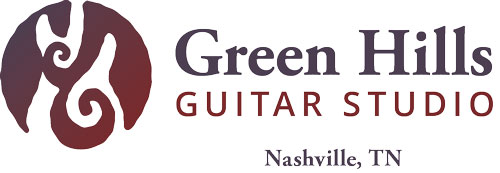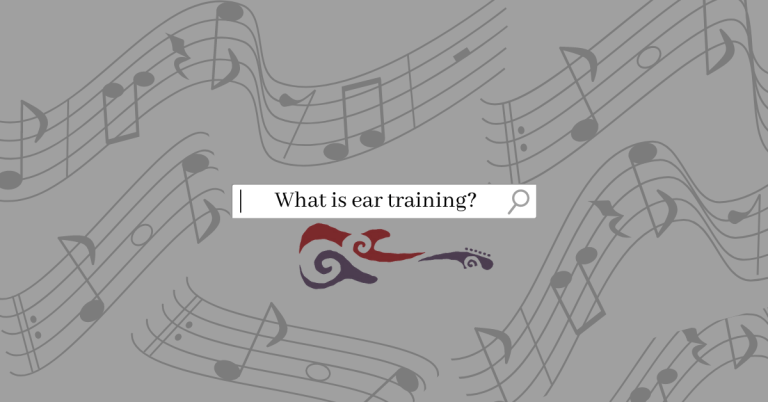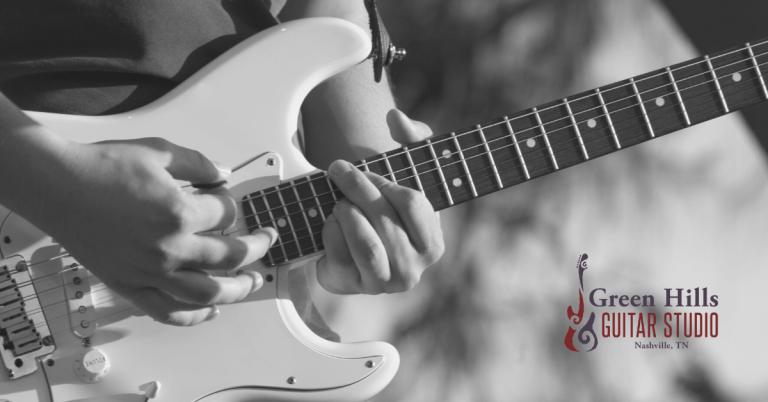Why Cadences Matter: How Songs “Feel Finished”
Have you ever listened to a song that felt unresolved, like it left you hanging in midair? Or maybe you’ve written a chord progression that loops endlessly without really landing anywhere. That elusive sense of resolution, of arrival or closure, often comes down to one key musical ingredient: cadences.
Understanding cadences can transform the way you write songs, arrange progressions, and even how you listen. Whether you’re a budding songwriter, a bedroom guitarist, or a music theory newbie, learning the types of cadences and how they create musical punctuation is essential to mastering the emotional arc of a song.
In this post, we’ll demystify cadences such as authentic, plagal, deceptive, and others without burying you in music theory. Instead, we’ll use ear-training metaphors, classic song examples, and a hands-on approach to help you feel what cadences do and why they matter.
What Is a Cadence?
At its core, a cadence is the musical equivalent of punctuation. It tells your ears whether a phrase is ending, continuing, or turning unexpectedly. Just like periods, commas, and question marks help guide a sentence, cadences guide harmonic motion and signal changes in emotion, tension, and resolution.
In songwriting, cadences help you:
- Make a chorus feel like a chorus
- Give verses a sense of movement or “leaning forward”
- Build tension before a big release
- Wrap up the song with a feeling of finality—or intentional ambiguity
If you’ve ever ended a chord progression like G–D–Em–C and ended on D, but it felt unfinished, you’ve already heard what missing a cadence sounds like.
The Big Three: Authentic, Plagal, and Deceptive
Let’s explore three of the most commonly used cadences in songwriting and how they affect a listener’s sense of completion.
1. Authentic Cadence (V → I)
Also known as: Perfect Cadence
Example: G major → C major (in the key of C)
Theory Breakdown
- Function: Dominant (V) resolving to Tonic (I)
- Scale degrees: 5 → 1 (G → C in C major)
- Voice leading clue: The leading tone (B) in the V chord resolves upward to the tonic (C), creating a strong sense of finality.
Ear-Training Metaphor
Think of someone asking a question and then answering it clearly. There’s no ambiguity—it’s like ending a sentence with a confident period.
Listening Examples
- “Let It Be” – The Beatles
- Listen to the final progression in the verse:
- C – G – Am – F – C – G – C
- That last G → C is your authentic cadence at work.
- “Hallelujah” – Leonard Cohen
- The chorus lands on authentic cadences multiple times to create that emotionally conclusive effect.
Why It Matters in Songwriting
The authentic cadence is your go-to for emotional resolution. It gives listeners the sense that a phrase or section is done, like arriving home. Whether you’re ending a verse, chorus, or the entire song, this cadence delivers a dependable, satisfying close.
2. Plagal Cadence (IV → I)
Also known as: The “Amen” Cadence
Example: F major → C major (in the key of C)
Theory Breakdown
- Function: Subdominant (IV) resolving to Tonic (I)
- Scale degrees: 4 → 1 (F → C in C major)
- Voice leading clue: Less tension than V → I, since there’s no leading tone. The motion feels smooth and natural.
Ear-Training Metaphor
It’s like a gentle exhale at the end of a conversation—or a warm “Amen” at the close of a hymn. There’s closure, but it’s soft and serene rather than bold.
Listening Examples
- “Let It Be” – The Beatles (again!)
- The final chord often arrives at C via an F, especially in live performances or simplified arrangements.
- “A Whiter Shade of Pale” – Procol Harum
- Built almost entirely on plagal motion, this song floats rather than lands.
Why It Matters in Songwriting
Plagal cadences are ideal when you want resolution without drama. They work beautifully in ballads, folk, gospel, soul, and ambient music—anywhere a reflective or emotional tone is welcome.
3. Deceptive Cadence (V → vi)
Also known as: The Plot Twist
Example: G major → A minor (in the key of C)
Theory Breakdown
- Function: Dominant (V) resolving unexpectedly to Submediant (vi)
- Scale degrees: 5 → 6 (G → A in C major)
- Voice leading clue: The ear expects B → C, but instead hears B → C (in Am), subverting the expectation of resolution.
Ear-Training Metaphor
You walk toward a door expecting to go inside, but instead it opens into a hidden slide. It’s not a dead end—it just wasn’t where you thought you were going.
Listening Examples
- “Hotel California” – The Eagles
- The verse progression keeps pulling you forward without letting you settle—deceptive motion at its core.
- “Bohemian Rhapsody” – Queen
- Queen’s harmonic wizardry includes multiple deceptive cadences to sustain narrative and emotional unpredictability.
Why It Matters in Songwriting
Deceptive cadences create tension, surprise, and a reason to keep listening. They’re powerful tools for avoiding cliché or monotony, especially when moving from pre-chorus to chorus or in bridges where you want to shift energy unexpectedly.
Other Cadences to Explore
While the big three cadences (authentic, plagal, and deceptive) cover a lot of ground in popular songwriting, there are a few more worth knowing. These less common cadences offer extra nuance and can be incredibly effective when you want to shape the emotional pacing of your music in subtle or unexpected ways.
1. Half Cadence (Any chord → V)
Also thought of as: A musical comma
Feel: Incomplete, expectant
Example: C → G (in the key of C)
This cadence ends on the dominant (V) chord, leaving the listener hanging. It’s often used at the end of a phrase or verse to build anticipation before the next section. Because it avoids resolution, it naturally pulls the music forward.
Song Example: “Yesterday” – The Beatles (The phrase “why she had to go…” ends unresolved on V, begging continuation)
2. Phrygian Half Cadence (iv⁶ → V in minor keys)
Also known as: Flamenco cadence
Feel: Exotic, intense, foreboding
Example: F minor (first inversion) → G major (in C minor)
This cadence is rare in pop but powerful in classical, Spanish, and modal music. The motion from the ♭6 scale degree (Ab in C minor) to G (the dominant) creates a dramatic and dark color, especially with the half-step descent in the bass (A♭ → G).
Use Case: Classical bridges, flamenco intros, or moody transitions in cinematic songwriting
3. Interrupted Cadence (V → ?)
Also called: Evaded cadence
Feel: Startling, unresolved, narratively ambiguous
Example: G → Dm (in C major) or V → any chord except I
This is a broader category where a strong setup for resolution to the tonic is intentionally derailed. It’s similar to a deceptive cadence but more open-ended—sometimes it’s V → IV, V → ii, or even V → I⁷ (still dominant).
Use Case: Great for bridge sections, post-choruses, or any time you want to keep the listener guessing.
Why These Cadences Matter
These cadences are less predictable and therefore emotionally rich. They’re not often front-and-center in mainstream pop, but they show up more than you might think—in cinematic scoring, experimental songwriting, modal rock, and even some progressive or jazz-influenced indie music.
Using one of these cadences once in a song—especially after the ear has been conditioned to expect something else—can provide that one moment of surprise or sophistication that makes your writing stand out.
Listening Challenge: Hear the Difference
Cadences aren’t just theory, they’re something you can feel in almost every song you love. Try this short playlist exercise to train your ear:
| Song | Cadence(s) Used |
|---|---|
| “Let It Be” – The Beatles | Authentic & Plagal |
| “Hallelujah” – Leonard Cohen | Authentic |
| “Don’t Stop Believin’” – Journey | Deceptive |
| “Somebody That I Used to Know” – Gotye | Deceptive (verse) |
| “Creep” – Radiohead | Deceptive and Authentic (chorus) |
What to listen for:
- Where do phrases feel resolved?
- Where does the music seem to pause or hang?
- Are there any moments that fake you out or delay resolution?
These moments are driven by cadences. Play through each song and follow how the chords shape the emotion of each section.
Why Cadences Should Be in Your Songwriting Toolbox
- Cadences aren’t abstract. They are how music breathes. They shape the emotional arc of a song and give listeners a sense of direction, momentum, and closure.
- If you want a chorus that lands with power, a verse that keeps moving forward, or a bridge that surprises your listener, cadences are your guideposts. They don’t just tell the ear that we’ve arrived. They explain how we got there.
- Think of a song like “Someone Like You” by Adele. The chord movement delays resolution at just the right moments. It stretches emotional tension before gently releasing it. That is cadence in action, used with precision.
- The more you recognize cadences, the more you will start using them with intention. You will begin to choose whether a phrase should land, drift, or swerve. That choice is the beginning of truly expressive songwriting.
Ready to Take Your Songs Further?
Learning about cadences is just one step toward writing more confident, emotionally resonant music. At Green Hills Guitar Studio, we help students of all levels bring music theory to life—whether you’re writing your first song or refining your harmonic language.
Take songwriting lessons with us in Nashville or online and discover how to use tools like cadences to make your music more expressive, powerful, and finished. Get in touch today to start writing the songs only you can write.







